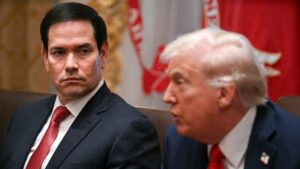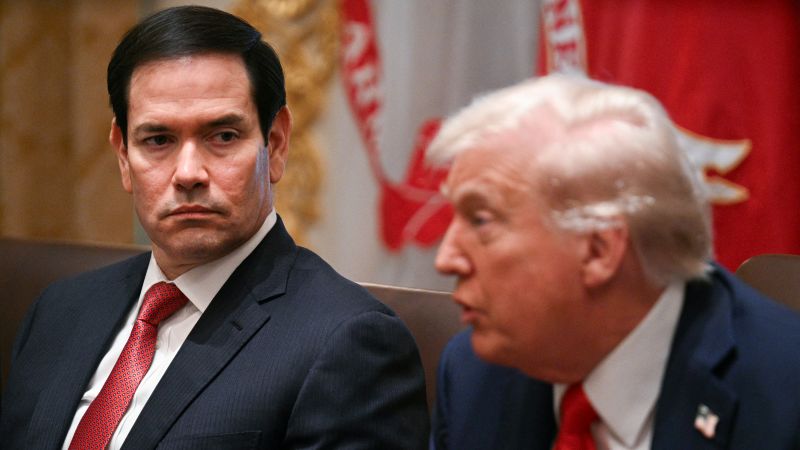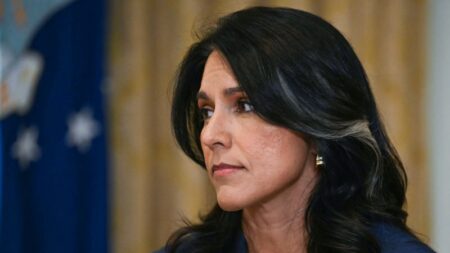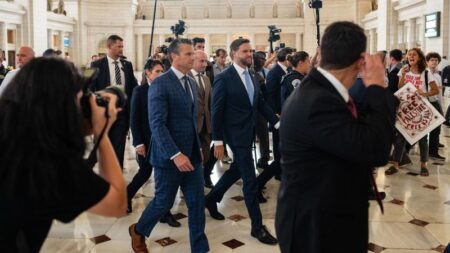In a recent controversial development surrounding U.S. foreign policy, lawmakers, notably from the Republican Party, expressed their discontent with President Donald Trump’s approach to the ongoing conflict between Russia and Ukraine. They reported that Secretary of State Marco Rubio described Trump’s proposed peace plan as a mere “wish list” aligning more with Russian interests than a genuine offer reflecting U.S. positions. This statement has stirred significant discourse among officials within the U.S. government as well as among lawmakers advocating for a more balanced resolution to the war.
The rebuttal from the State Department was immediate and firm. A spokesperson labeled the senators’ account as “blatantly false,” underscoring the administration’s position on its peace proposals. The tension escalated further when Rubio himself suggested online that the senators might have misinterpreted his comments, even though they claimed to have spoken directly with him regarding the plan. Despite the confusion and Rubio’s subsequent clarifications, the disclosure that there are considerable discrepancies between Trump’s proposed strategy and that of the U.S. administration has highlighted an internal struggle over foreign policy direction within the Trump administration.
Analyzing the situation further, this discourse has logical implications as the peace plan, characterized by a complex, newly leaked 28-point framework, appears to significantly favor Russian demands—demands that Ukrainian President Volodymyr Zelensky has firmly rejected on numerous occasions, most notably regarding territorial concessions. Trump urged Kyiv to accept the plan by early next week, indicating urgency alongside an already fraught diplomatic environment.
Amid this backdrop, South Dakota Republican Senator Mike Rounds indicated during a security conference in Canada that the administration wished to utilize this plan as a starting point for negotiations. However, he insinuated skepticism about its legitimacy, suggesting its formulation seemed biased toward Russian perspectives. Rounds’ remarks underscore the broader bipartisan concerns afoot, echoing sentiments from his fellow senators who articulated the potential harm in rewarding Moscow’s aggression, contrary to ethical and legal responsibilities toward a peace process.
The bipartisan group of experienced senators, which included independent voices like Senator Angus King of Maine, publicly conveyed what they had learned from Rubio—the notion that the peace plan was not authentically reflective of U.S. foreign policy but instead aligned closely to Russian expectations. This assertion demonstrates the disarray impacting U.S. diplomatic communications, particularly as expectations surrounding outreach to foreign leaders are mired in contradictory statements from the very top of governance.
Looking ahead, Rubio, bearing dual roles as both the national security adviser and secretary of state, was set to represent the U.S. in Geneva discussions addressing the peace proposal. He claimed through social media that the suggested framework was indeed U.S.-authored, embedding elements of input from both Russian and Ukrainian perspectives. Nevertheless, the State Department reiterated its criticisms of lawmakers’ representations, creating a rift in narratives about the administration’s intentions and directions.
Adding another layer to the controversy, senior officials within the Trump administration emphasized their belief in the proposal as an invaluable lead-in to broader negotiations aimed at achieving long-term peace, despite lingering misgivings about its acceptance. The senators previously articulated a strong opposition to the plan amid fears that endorsing it would incentivize further Russian aggression not only in Ukraine but in its strategic maneuvers regarding other nations as well.
Further underscoring the diplomatic crossroads was President Putin’s prompt acknowledgment of the plan, framing it as a potential cornerstone for a comprehensive peace settlement, presuming alignment from both Ukraine and European allies. In contrast, President Zelensky’s cautious response affirmed openness yet strongly insisted that negotiations must provide fair treatment for Ukraine, emphasizing the delicate state of affairs as the nation navigates what it refers to as “one of the most difficult moments in our history.”
Finally, the backdrop of this unfolding drama—the Halifax International Security Forum—gathers military leaders, politicians, and analysts annually to discuss pressing security issues. This year, the forum was tempered significantly by the absence of U.S. defense officials due to the Trump administration’s stance, particularly amid strained Canada-U.S. relations exacerbated by recent political dynamics and trade disputes. This situation not only invites examination of the proposed peace plans but also wider implications for international alliances and stability in a polarized geopolitical climate. Overall, the dialogue surrounding the peace proposal showcases the need for cohesive messaging and strategic alignment within U.S. foreign policy endeavors.











